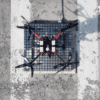‘Flying Wing’ UAV From UAVOS Soars Like a Bird
Looking more like an elegant dove-inspired frisbee than a drone, the new fixed wing UAV from Silicon Valley-based drone solutions company UAVOS soars above the autumn colours of a lakeside forest.
It has however, a great deal more features than your average frisbee. In the new unmanned Borey-10 fixed wing aircraft, UAVOS has included rechargeable LiIon cell-based batteries in-house, a hermetic housing for the autopilot, improving reliability and ease of operation.
The elegance of the design belies the benefits of its simplicity. By reducing the amount of units and components in the UAV, the likelihood of accidents are significantly reduced and the life of the aircraft prolonged. The time from start to finish of prep for flight including mounting of the UAV, is only 10 minutes.
“Borey-10 is an unmanned aircraft, always ready for take-off! Due to its small size and modular design, Borey-10 is easily transported, assembled, and launched fast even under the most unfavorable conditions. In the process of developing the aircraft, special attention was paid to the simplicity of operation, which significantly reduces the cost of maintenance and preparation for the flight, and increases the economical utilization efficiency of the complex.”
Vadim Tarasov, UAVOS investor and Board member
Fixed wing Borey-10 also has an impressive range in a wide variety of weather conditions, say UAVOS. Transmission of real-time video can be a minimum 30km, with up to 70 km control range. A big advantage of the new unmanned aircraft is a high duration of nonstop flight – 4 hours with a payload of 2 lb (1 kg). A heated battery compartment allows the drone to fly temperatures as low as -22 ° C.
Built according to “flying wing” schematics, the Borey-10 is quite compact with a wingspan of only 140 inches (3.57 meters) and a weight of 20 pounds (9 kg). Launches undertaken from unpopulated locations require no special training, being done with the help of a rubber rope or a catapult and landing with a parachute.
For emergency situations, the Borey-10 is equipped with a system of flaps which operate in the case of emergency landing. When it makes contact with the earth’s surface, the console is released from the center wing and to absorb the force of impact, leaving the body of the UAV intact. Designed to land on its back, the UAV reduces the chance of damage to the payload payload from damage.
For researchers, its ability to operate in remote areas is sure to be attractive. In the absence of GNSS signals, the UAV is equipped with an EW countermeasure system allowing the UAV’s operation regardless.
It is also ideal for a range of industrial purposes, being equipped with standard stills camera, a video camera which is mounted on the front, a thermal imaging camera and a gyrostabilized TV camera. UAVOS say the ‘Borey-10 is indispensable as an unmanned aircraft for rescue operations during emergency and search operations’, as well as surveillance and reconnaissance tasks, and mapping and monitoring of oil and gas pipelines, military bases and state borders.





















